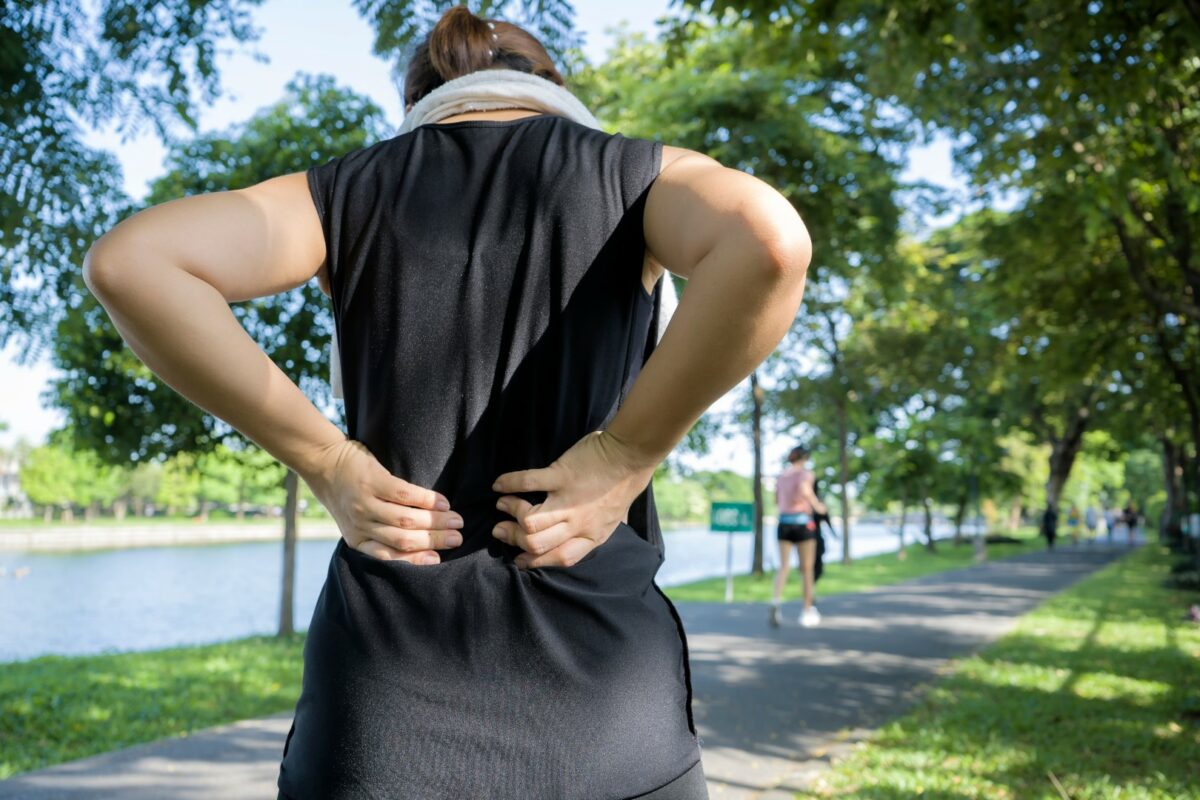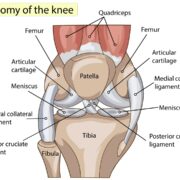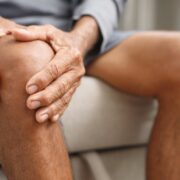
Why Do I Have Lower Back Pain When Walking?
Lower back pain is a very common complaint. It can be mild or severe, acute or chronic, and a result of many various causes. Being physically active is one of the best things you can do to prevent or manage back pain, but if you experience back pain when walking, it is difficult to get enough exercise.

Below are some of the common causes of lower back pain from walking and standing. This is a highly treatable issue. If you continue to experience pain and it limits your activity and mobility, it is time to see an orthopedic back, neck, and spine specialist.
Why Do I Have Lower Back Pain From Walking or Standing?
Mild or severe lower back pain when walking or standing can be caused by many factors, including muscle fatigue, curving in the spine, pulled muscles, sciatica, disc disease, and more.
1. Muscle Fatigue
It is most likely that the root cause of your lower back pain is simply muscle fatigue. Your lower back and other core muscles hold your trunk upright when you stand and walk. Over time, these muscles get tired and start to feel sore. The weaker those muscles are, the sooner they will start to feel fatigued.
The simple solution to this kind of lower back pain is simply to rest or walk shorter distances. To prevent or delay the onset of fatigue and pain, engage in regular core strengthening exercises.
2. Excessive Lordosis
This is a common cause of back pain from walking or standing. Lordosis is the natural inward curve of the lower spine. Excessive curvature here, also known as swayback, is associated with pain when you stand or walk for longer periods.
The most common causes of excessive lordosis in adults are pregnancy, obesity, and osteoporosis. Physical therapy and exercise to strengthen the core muscles and improve posture can help correct the curvature and reduce pain. For some people, losing weight also helps.
3. Pulled Muscles, Sprains, and Strains
Minor injuries can also trigger lower back pain when walking. A likely cause is overexertion that pulls a muscle or connective tissue in the lower back or legs. Rest is best for recovering from a minor injury. Heat and cold therapies and over-the-counter pain medications can help manage the pain until it heals.
4. Spinal Stenosis
This condition occurs when the space surrounding the spinal cord narrows. This compresses the spinal cord and nerves in the area, resulting in pain. Spinal stenosis is most often caused by the wear and tear of osteoarthritis. Rarer causes include traumatic injury and tumors.
If you have spinal stenosis, you might have both lower back pain and leg pain after walking or standing for a while. Treatment includes pain medication, physical therapy, steroid injections, and surgery to create more space in the spinal column.
5. Sciatica
Sciatica is pain along the sciatic nerve, which runs from the lower back and down the length of the leg. Pain is often in the lower back but can also shoot down the leg. Sciatica pain is usually worse when sitting, but you can experience it when walking, as well. Treatments include physical therapy, medication, injections, and only rarely surgery.
6. Degenerative Disc Disease
When the cushioning discs of tissue between vertebrae in the spine wear down, the bones rub against each other, causing pain and stiffness. Some degree of degeneration is normal with age, but other factors can trigger or accelerate it, including obesity, traumatic injuries, smoking, and physically demanding work.
Conservative treatments are adequate for many patients. Exercising to strengthen back muscles, pain medications, physical therapy, and stretching can bring relief. In some cases, surgery is necessary to relieve pressure on the bones.
EmergeOrtho’s Dr. Geissele explains lower back pain and provides some helpful exercises in this video:
What Can I Do if My Lower Back Hurts When Walking?
If you have lower back pain, you can most likely get relief from rest, strengthening exercises, stretching, and other simple measures. If the pain continues or gets worse, or causes other troubling symptoms like lack of bladder or bowel control, you need to see an orthopedic spine and back specialist.
The specialists at EmergeOrtho—Foothills Region can evaluate you, determine an underlying cause, and explain treatment options. You might benefit from conservative treatments and physical therapy. Depending on the cause, you might benefit from surgery. Contact us today and request an appointment online to get started.







